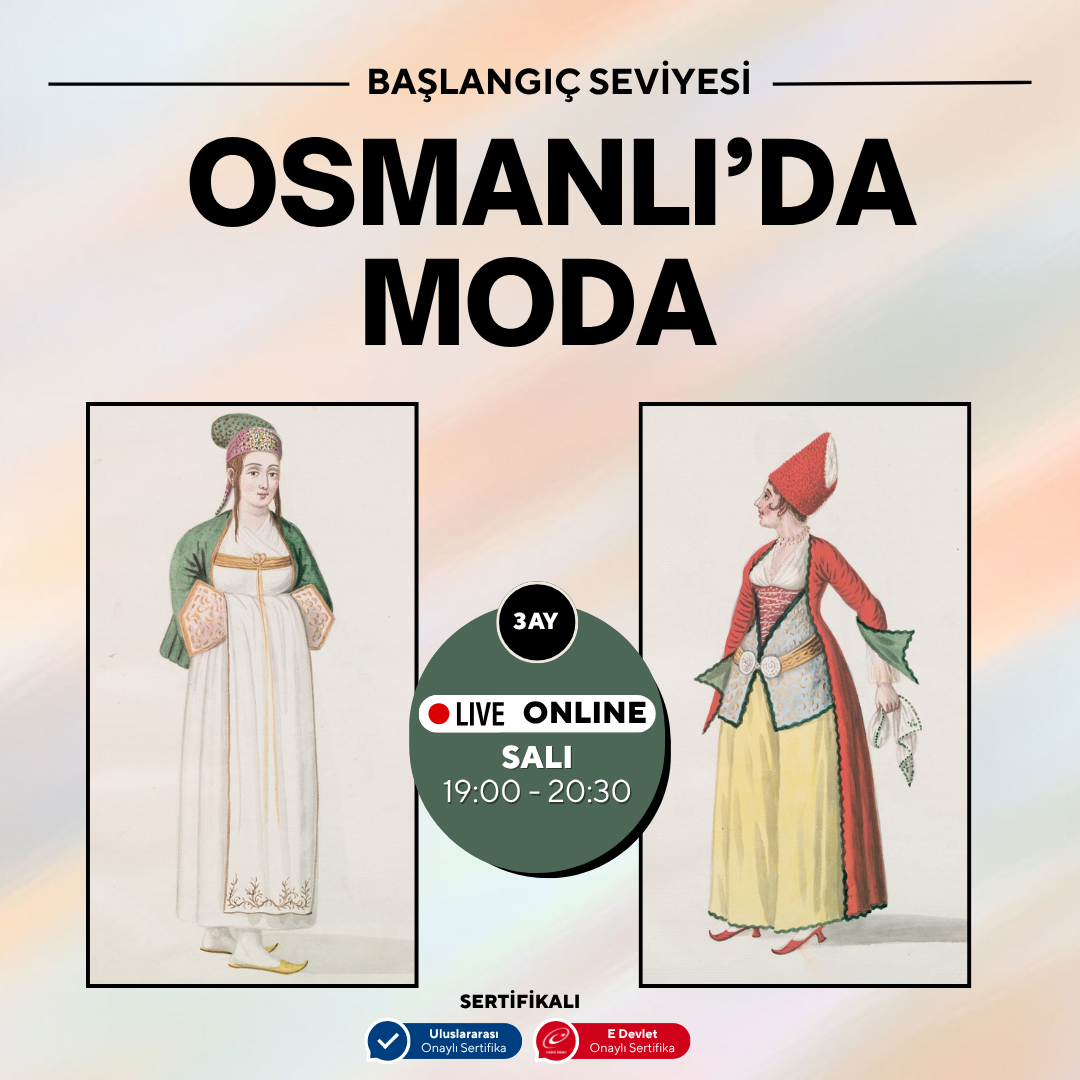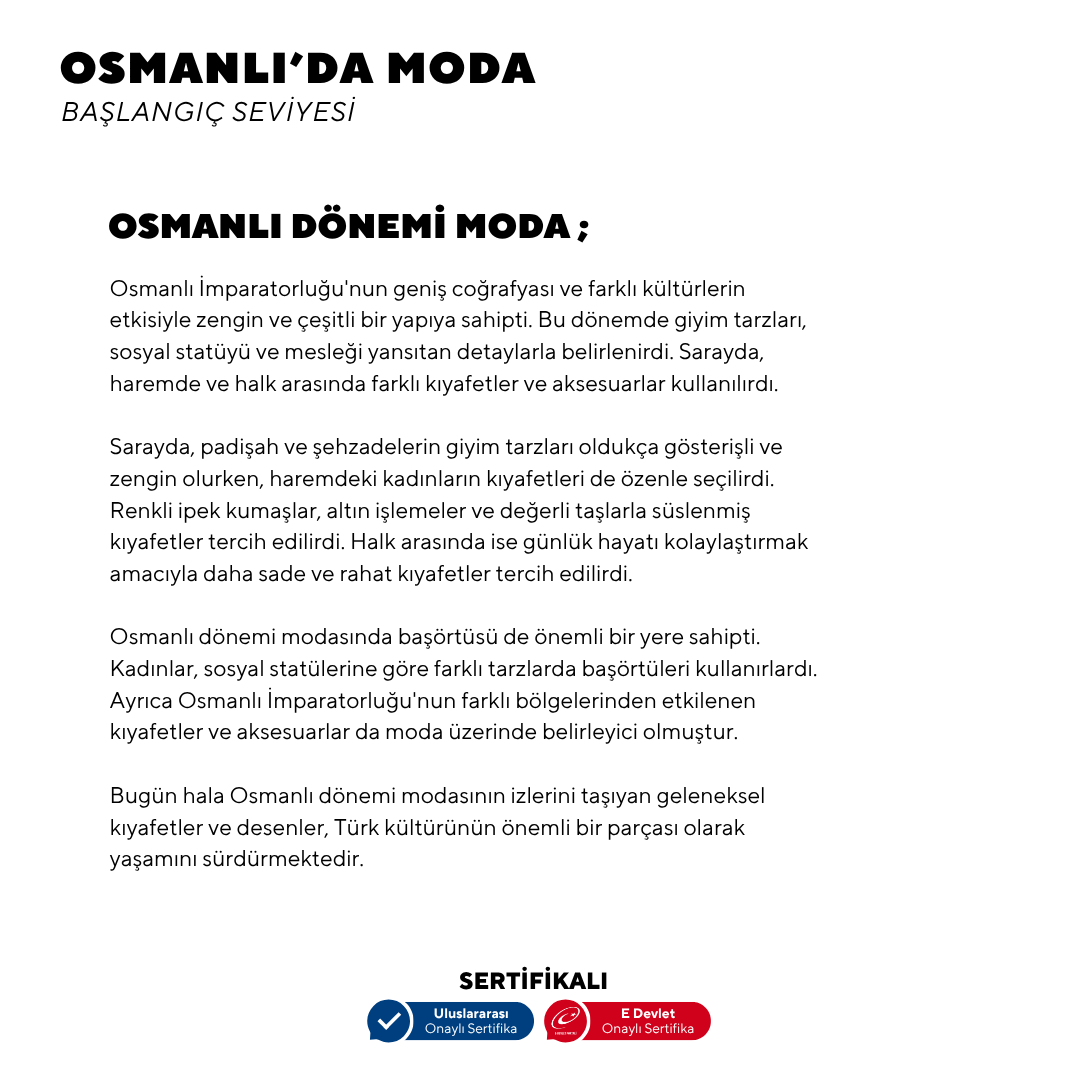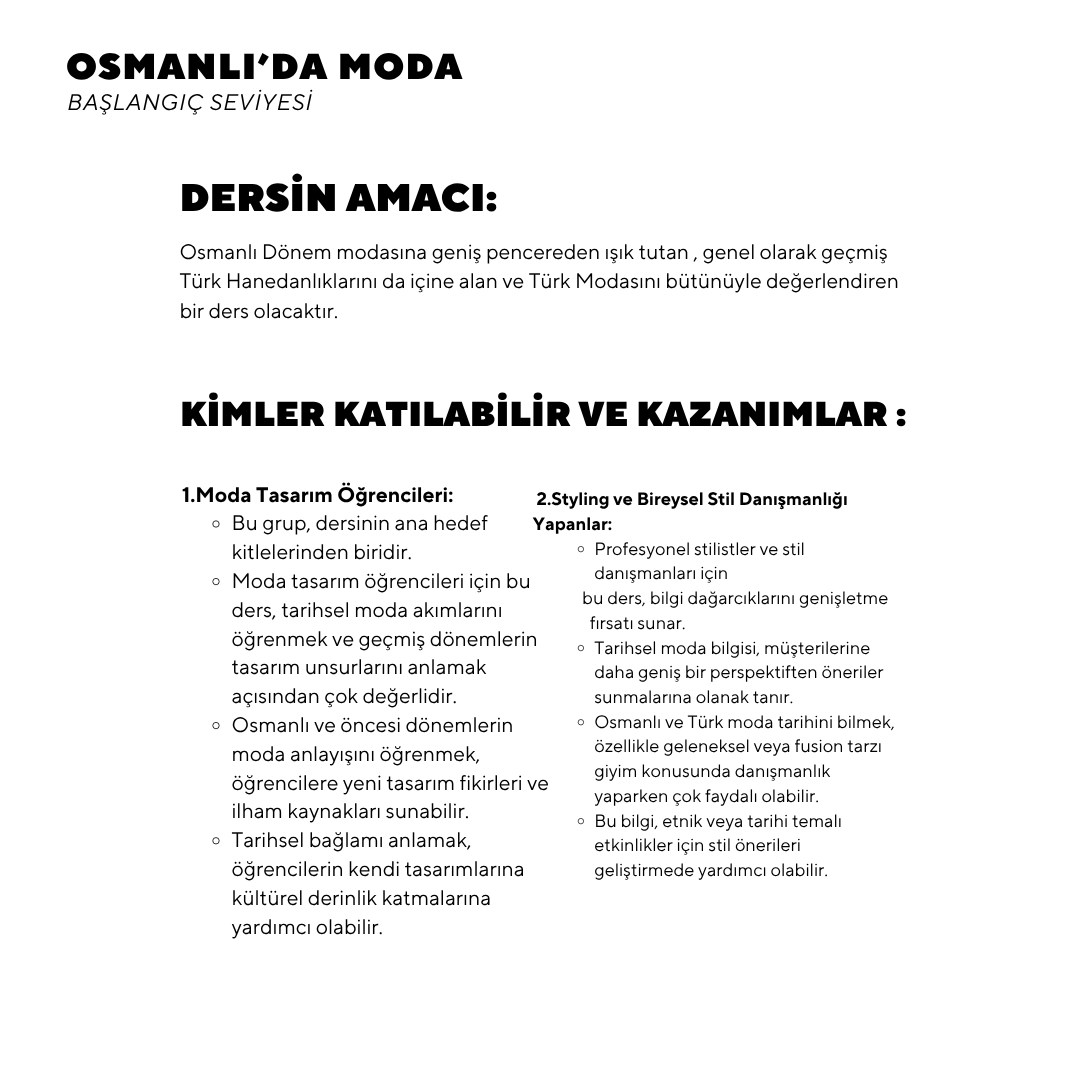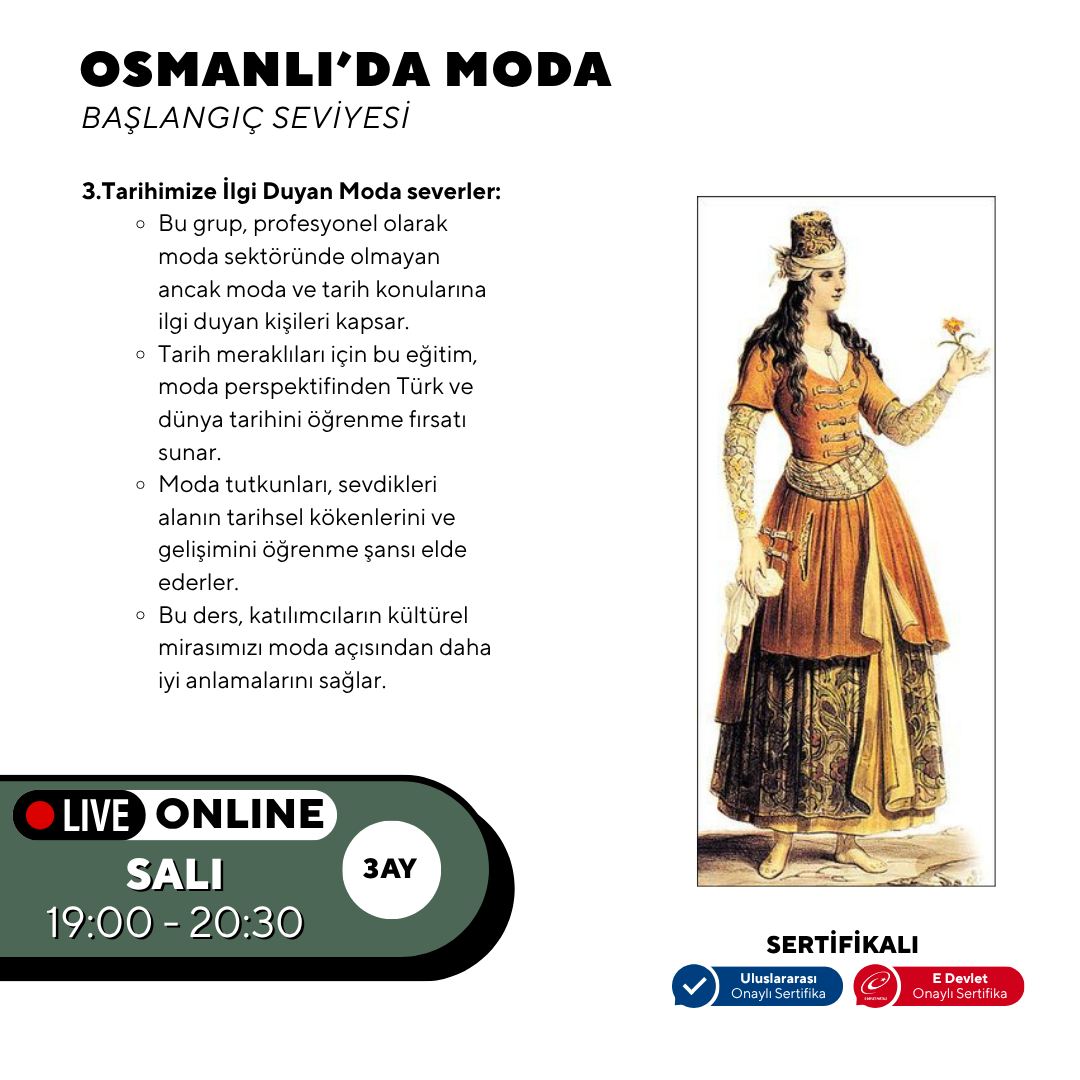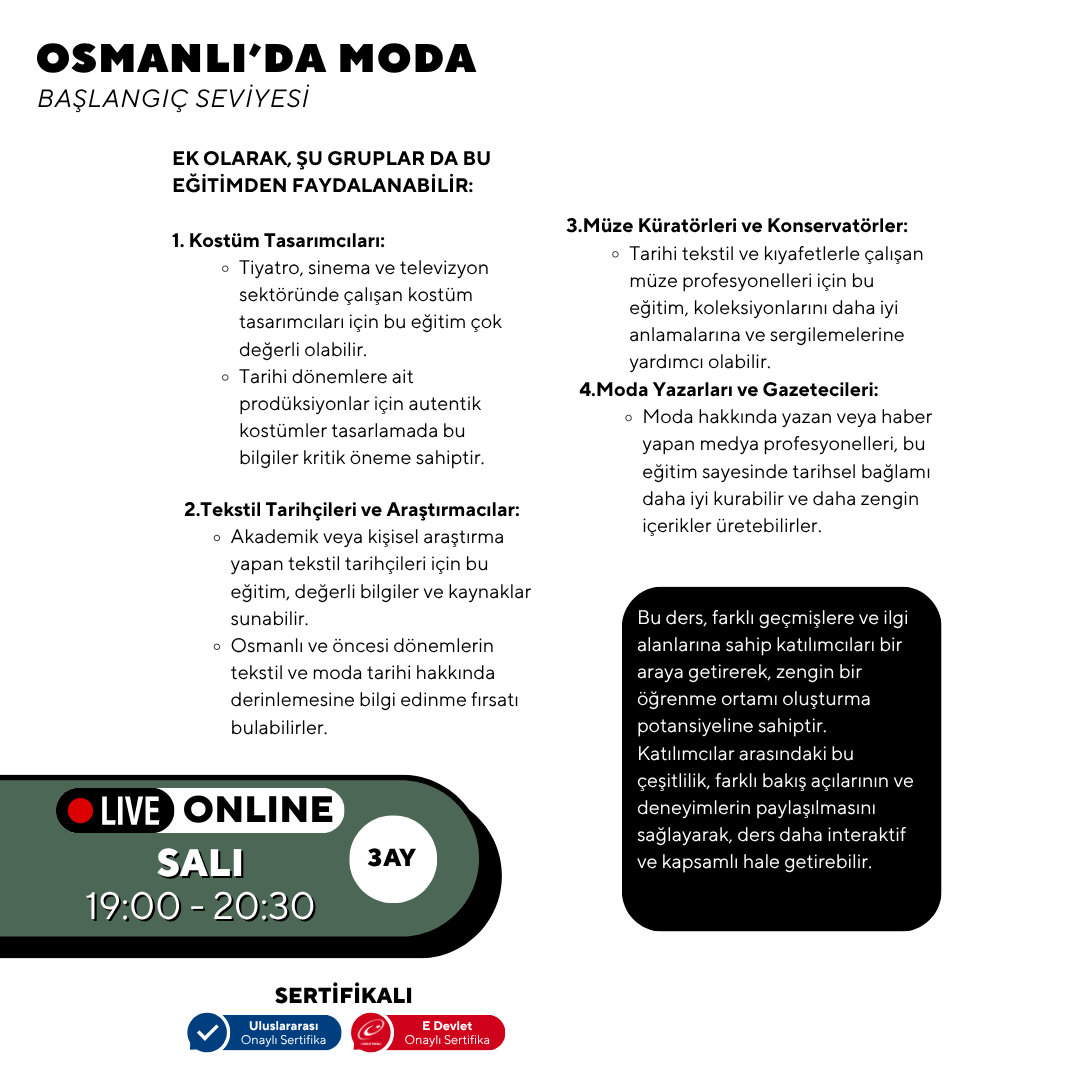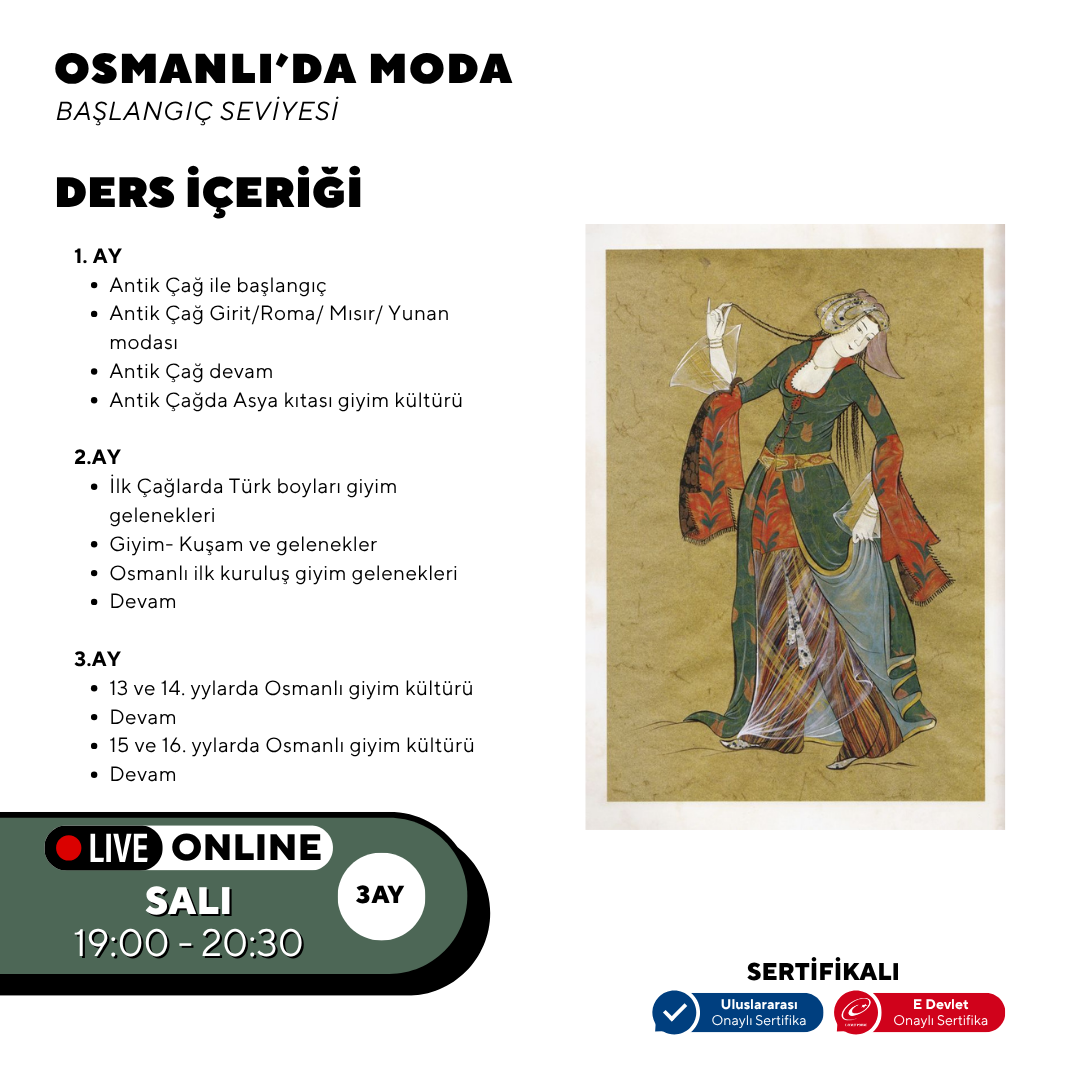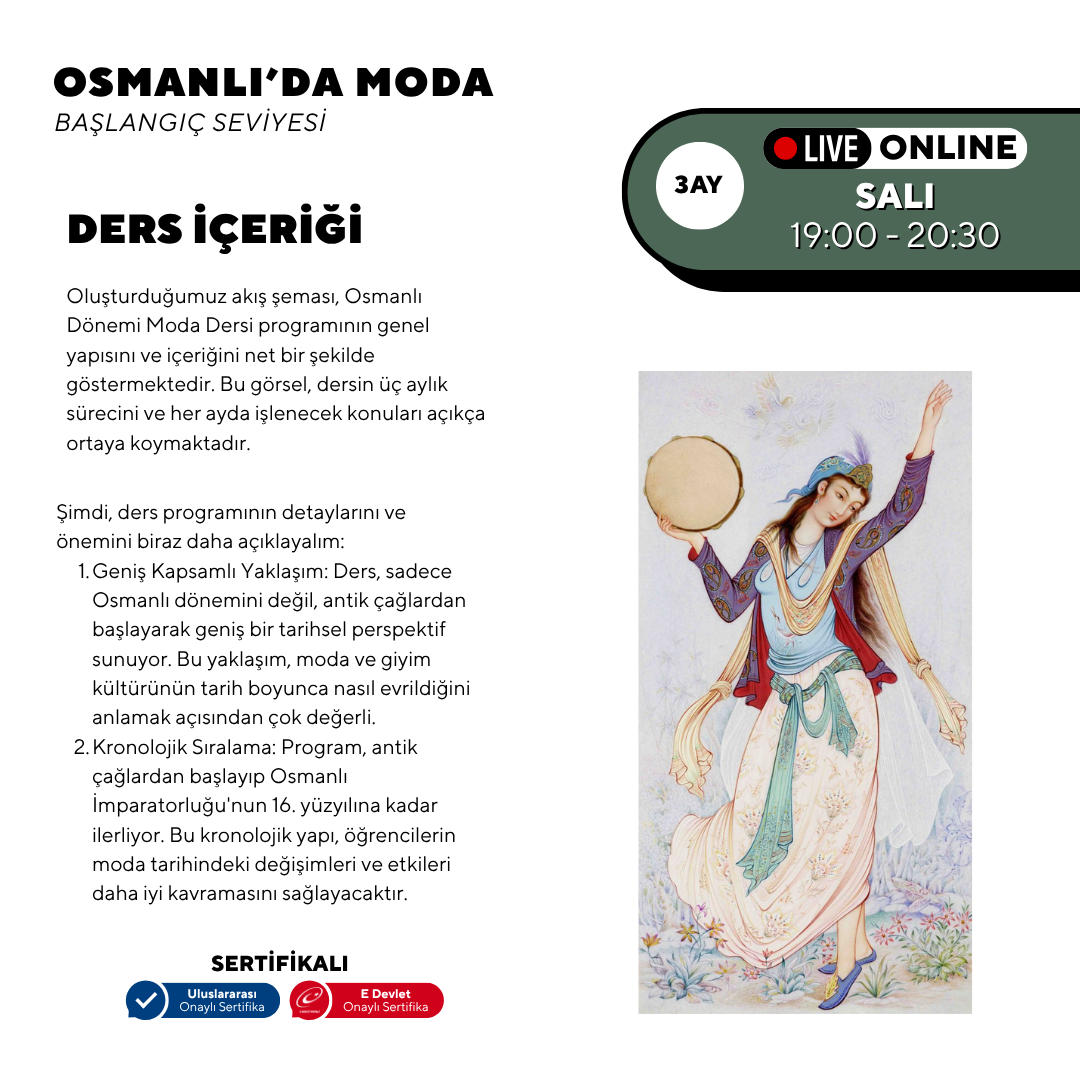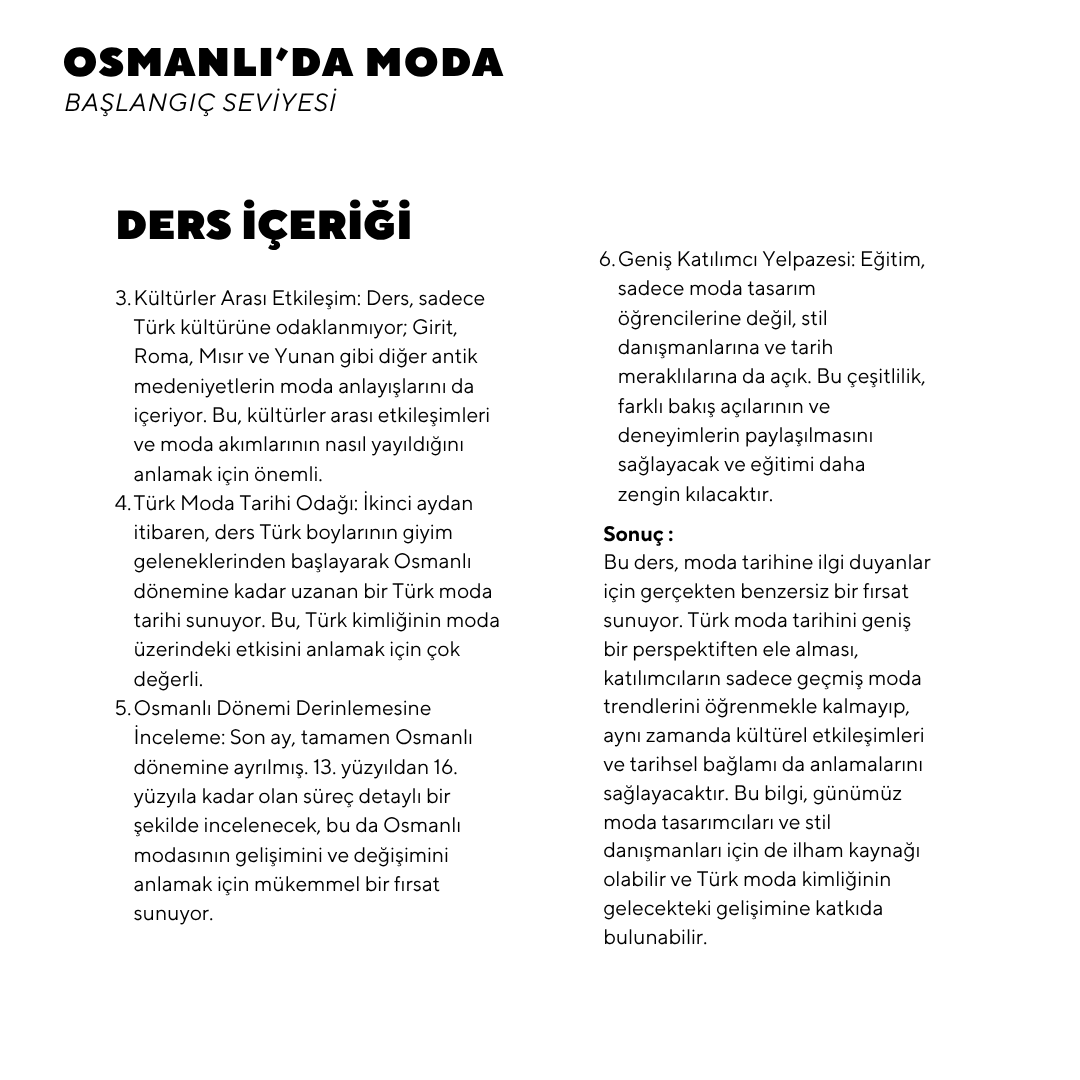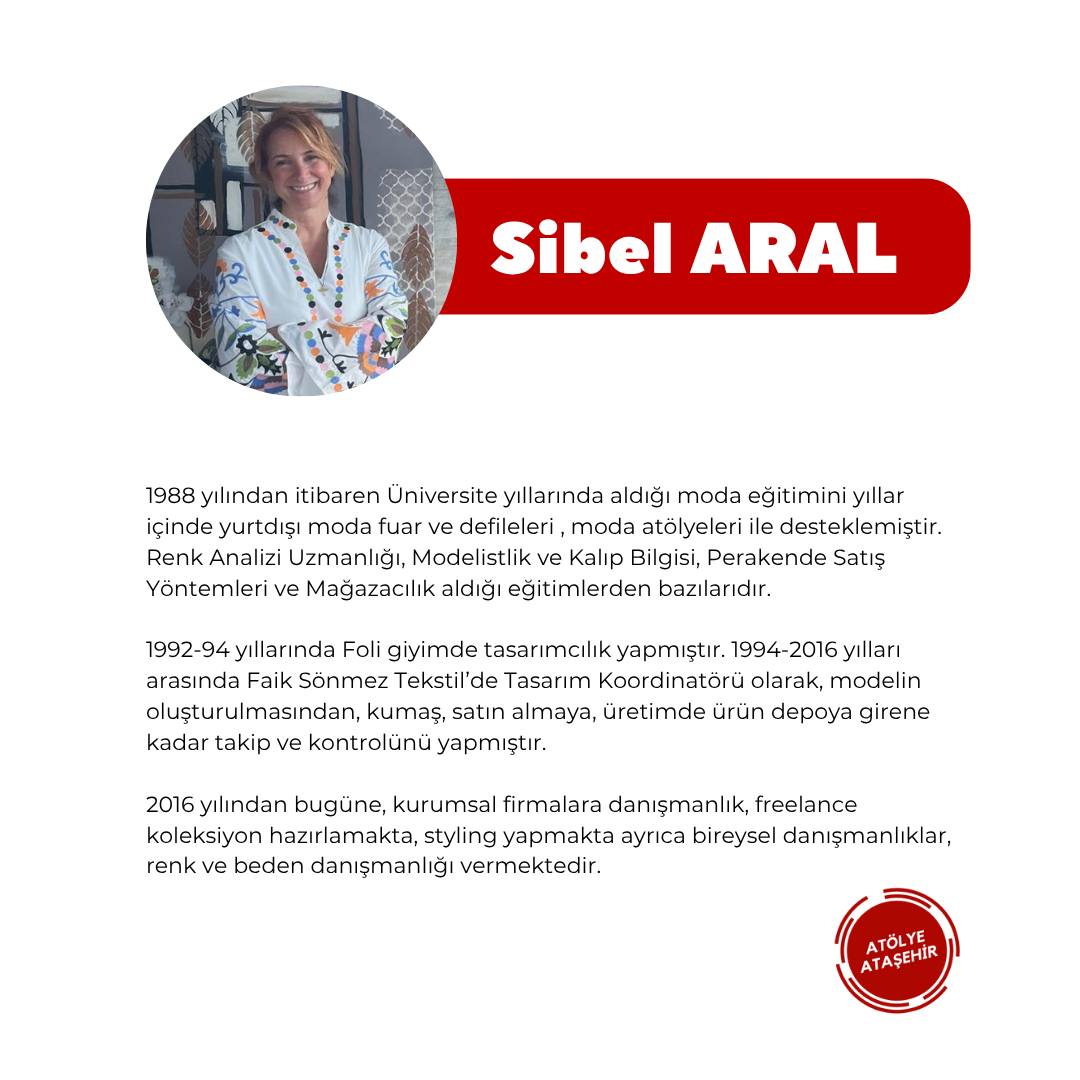Fashion in the Ottoman Empire - Online
The Ottoman Empire had a rich and diverse structure due to its vast geography and the influence of different cultures. During this period, clothing styles were determined by details reflecting social status and profession. Different clothes and accessories were used in the palace, the harem and among the public.
While the clothing styles of the sultans and princes in the palace were quite showy and rich, the clothing of the women in the harem was also carefully selected. Colourful silk fabrics, gold embroidery and clothes decorated with precious stones were preferred. In order to make daily life easier, simpler and more comfortable clothes were preferred among the people.
Headscarves also had an important place in Ottoman fashion. Women used different styles of headscarves according to their social status. In addition, clothing and accessories influenced by different regions of the Ottoman Empire also had a decisive influence on fashion.
Today, traditional clothing and patterns that still bear traces of Ottoman-era fashion continue to survive as an important part of Turkish culture.
Purpose of Education:
It will be an education that sheds light on Ottoman Period fashion from a broad perspective, generally includes past Turkish Dynasties, and evaluates Turkish Fashion as a whole.
Who Can Participate and Benefits:
1.Fashion Design Students:
· This group is one of the main target audiences of education.
· For fashion design students, this training is invaluable in learning about historical fashion trends and understanding the design elements of past eras.
· Learning about the fashion sense of the Ottoman and pre-Ottoman periods can provide students with new design ideas and sources of inspiration.
· Understanding historical context can help students add cultural depth to their designs.
2. Styling and Individual Style Consultants:
· For professional stylists and style consultants, this training provides an opportunity to expand their knowledge.
· Their historical knowledge of fashion allows them to offer advice to their clients from a broader perspective.
· Knowing Ottoman and Turkish fashion history can be very useful, especially when consulting on traditional or fusion style clothing.
· This information can be helpful in developing style recommendations for ethnic or historically themed events.
3. Fashion lovers who are interested in our history:
· This group includes people who are not professionally in the fashion industry but have an interest in fashion and history.
· For history enthusiasts, this training offers the opportunity to learn Turkish and world history from a fashion perspective.
· Fashion enthusiasts get the chance to learn about the historical roots and development of their favorite field.
· This training allows participants to better understand our cultural heritage from a fashion perspective.
Additionally, the following groups may also benefit from this training:
1. Costume Designers:
· This training can be invaluable for costume designers working in the theatre, film and television industries.
· This information is critical in designing authentic costumes for historical period productions.
2.Textile Historians and Researchers:
· For textile historians conducting academic or personal research, this course can provide valuable information and resources.
· They can have the opportunity to gain in-depth information about the textile and fashion history of the Ottoman and pre-Ottoman periods.
3. Museum Curators and Conservators:
· For museum professionals who work with historical textiles and clothing, this training can help them better understand and display their collections.
4. Fashion Writers and Journalists:
· With this training, media professionals who write or report on fashion can better establish historical context and produce richer content.
This training has the potential to create a rich learning environment by bringing together participants with different backgrounds and interests. This diversity among participants can make the training more interactive and inclusive by allowing different perspectives and experiences to be shared.
COURSE CONTENT
1st MONTH
· Starting with Antiquity
· Ancient Cretan/Roman/Egyptian/Greek fashion
· Ancient Age continued
· Clothing culture of the Asian continent in ancient times
2nd MONTH
· Clothing traditions of Turkish tribes in ancient times
· Clothing - Customs and traditions
· Clothing traditions of the early Ottoman establishment
· Continue
3rd MONTH
· Ottoman clothing culture in the 13th and 14th centuries
· Continue
· Ottoman clothing culture in the 15th and 16th centuries
· Continue
The flow chart we created clearly shows the general structure and content of the Ottoman Period Fashion Education program. This visual clearly reveals the three-month process of the training and the topics to be covered in each month.
Now, let's explain the details and importance of the training program a little more:
1. Broad Approach: The course offers a broad historical perspective, starting from ancient times, not just the Ottoman period. This approach is invaluable in understanding how fashion and clothing culture have evolved throughout history.
2. Chronological Order: The program starts from ancient times and progresses to the 16th century of the Ottoman Empire. This chronological structure will allow students to better understand the changes and influences in fashion history.
3. Intercultural Interaction: The training does not only focus on Turkish culture; it also includes the fashion sense of other ancient civilizations such as Crete, Rome, Egypt and Greece. This is important for understanding intercultural interactions and how fashion trends spread.
4. Turkish Fashion History Focus: Starting from the second month, the course offers a history of Turkish fashion, starting from the clothing traditions of Turkish tribes and extending to the Ottoman period. This is invaluable for understanding the influence of Turkish identity on fashion.
5. Ottoman Period In-Depth Study: The final month is devoted entirely to the Ottoman period. The period from the 13th to the 16th centuries will be examined in detail, providing an excellent opportunity to understand the development and change of Ottoman fashion.
6. Wide Range of Participants: The course is open not only to fashion design students but also to style consultants and history enthusiasts. This diversity will allow for the sharing of different perspectives and experiences, making the course richer.
Conclusion:
This program offers a truly unique opportunity for those interested in fashion history. It covers Turkish fashion history from a broad perspective,
SIBEL ARAL
She has supported her fashion education, which she received during her university years since 1988, with international fashion fairs, fashion shows and fashion workshops. Some of the trainings she received are Color Analysis Expertise, Modeling and Pattern Knowledge, Retail Sales Methods and Merchandising.
He worked as a designer at Foli Clothing between 1992-94.
Between 1994 and 2016, he worked as a Design Coordinator at Faik Sönmez Tekstil, monitoring and controlling the design from the creation of the model to the fabric purchasing and the product entering the warehouse.
Since 2016, she has been providing consultancy to corporate companies, preparing freelance collections, styling, and also providing individual consultancy, color and size consultancy…


